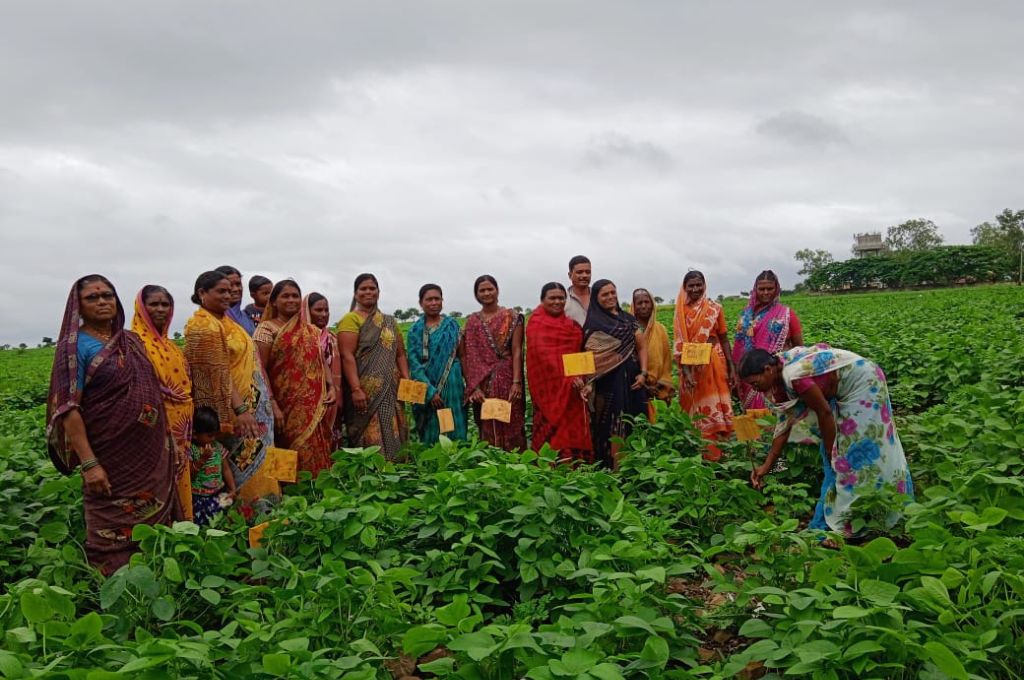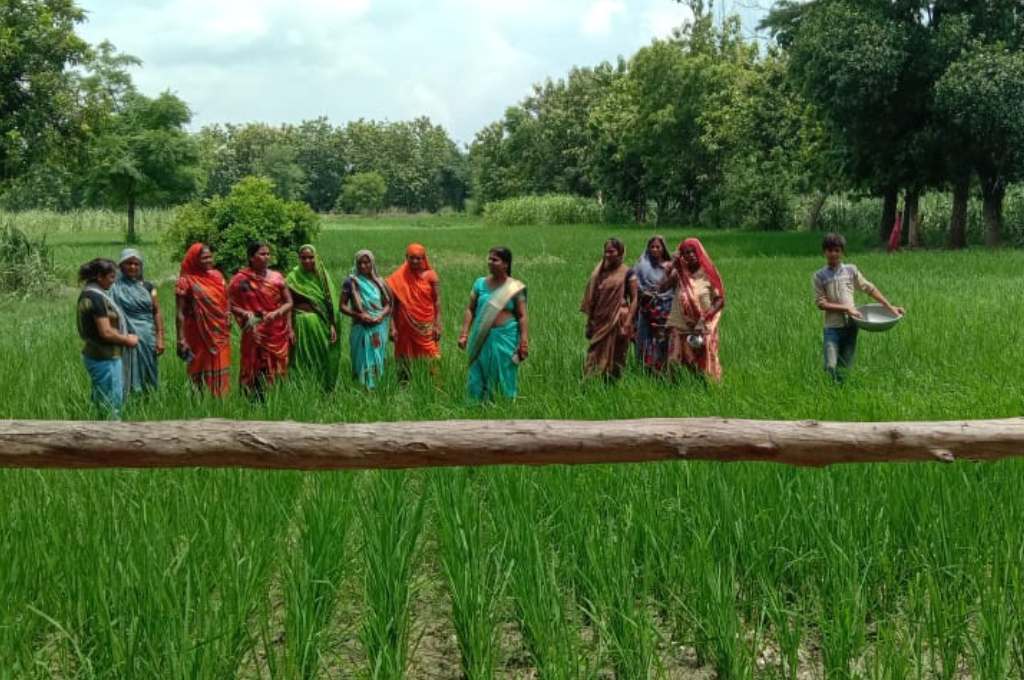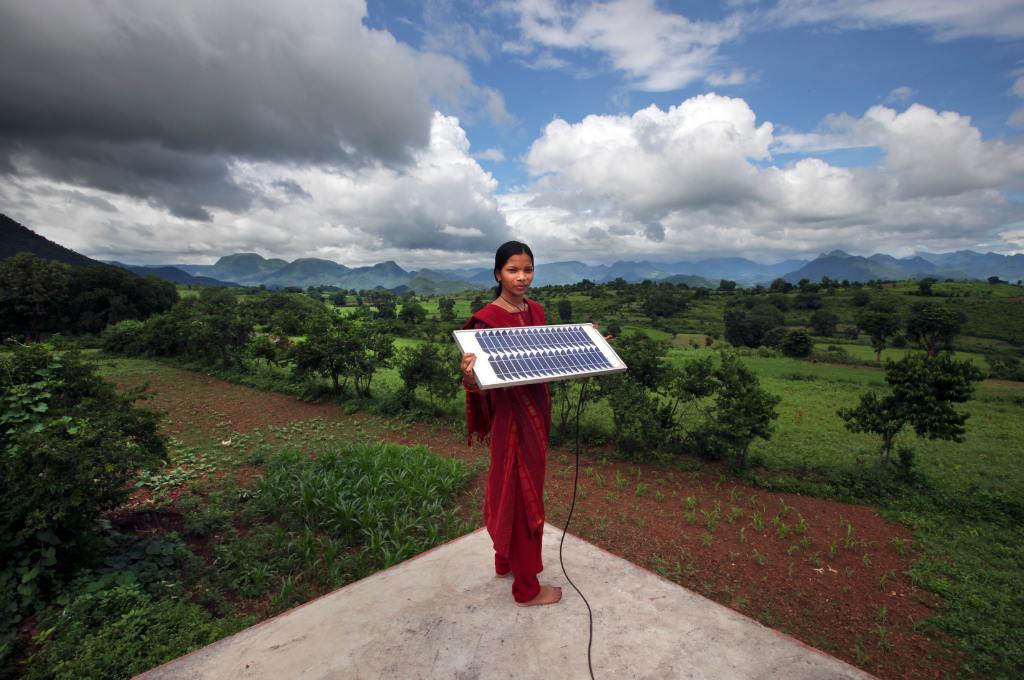In a pilot project in the wake of the 1993 Latur earthquake, over a thousand women took the lead as facilitators between the government and their communities for rehabilitation work. Nearly 30 years later, this model, of organising women for a community effort, has proved itself through earthquakes, tsunamis, cyclones, droughts, and, most recently, a pandemic.
Swayam Shikshan Prayog (SSP), the organisation that grew out of the pilot in Latur, Marathwada, was formally registered in 1998. Founder and social activist, the late Prema Gopalan, believed that crises are an opportunity for women to take up leadership roles in their communities. Today, SSP has an army of 5,000 women change agents at the grassroots. Known as sakhis (or friends), they have empowered 3,00,000 women as entrepreneurs, farmers, and community leaders.
In the fight against the climate crisis, SSP’s sakhis are, once again, on the front line in rural India. Marathwada in Maharashtra is infamous for farmer suicides—an agrarian crisis brought on, in part, by a long-standing preference for cultivating resource-intensive cash crops in a drought-prone region. Successive years of erratic rainfall and market forces have left their mark, with many farming households having borne the brunt of repeated failed harvests. This has led to mounting debts, distress migration, and hunger. It is here that SSP’s sakhis have promoted the one-acre model of farming among small and marginal women farmers. A climate-resilient approach to agriculture, it uses bio inputs to grow a diverse mix of food crops on one acre of land.
Small and marginal women farmers in the region who have taken up one-acre farming have seen an increase of up to 25 percent in crop yield. Significantly, in years of drought, and during the pandemic too, these farmers have been able to feed their families from their small yet productive plots of land.
What about SSP’s approach makes it effective?
By women, for women
SSP’s sakhis respond to diverse needs in their communities. Their work also helps them stretch their own potential. At its core, the objective is to bring rural women from the margins into the mainstream and to empower them with more public roles.
Naseem Shaik, associate director at SSP who has been with the organisation since the pilot in Latur, says, “I have seen women work in disaster rehabilitation in Marathwada, Tamil Nadu, Odisha, Sri Lanka, and Turkey. In all these places, they didn’t wait to be handed responsibility. Women take it on, grab it, for their children, elders, families, communities, animals.”
In the farming sector, women take charge when men migrate or shift to non-farm jobs. However, their role is often relegated to that of labour. They are not seen as farm owners or farmers, and are not part of the decision-making process about what crops to grow, how much to grow, sell, and consume in the household.
In a country where women inherit and own less than 2 percent of agricultural land, the one-acre model of farming is no mean feat.
SSP decided to change this. Over the past decade, they have helped more than 75,000 women farmers negotiate with their families for titles to an acre of family land, which they have used to grow nutrient-rich crops including millets, pulses, and leafy vegetables. When that is not an option, some women have leased land from bigger farmers. In a country where women inherit and own less than 2 percent of agricultural land, and inheritance laws remain a minefield, this is no mean feat. The women have then gone on to demonstrate that these plots can feed their families at times when bigger farmers face distress. This makes them effective influencers.
In the rural areas where SSP operates, social norms cause girls to drop out of schools or get married early. Naseem believes many of them seek the opportunities SSP offers to express their identities. SSP was born after the women samwad sahayaks (community resource persons), who worked on rehabilitation in Latur, told Prema they would not go back to ‘sitting at home’.
Anantika Singh, portfolio and partnership lead at Hindustan Unilever Foundation, says, “We work with many organisations. But the impact that sakhis make on the ground is stark. In some organisations, women are beneficiaries but not participants. In others, women move up the ladder and participate. Then you have SSP, where women are leaders. They have shifted from presence to participation to leadership.”

Stepping out, moving up
Prema believed that women need opportunity more than they require training. “We don’t use the technocratic top-down approach or classrooms to educate sakhis. We rely more on informal peer learning,” says Naseem.
This is no silver bullet, as fulfilling their roles as sakhis requires women to lobby with government officials, gram panchayats, and large-scale farmers. It often takes two years for them to gain the confidence and skills required for these public roles.
Over the years, SSP has developed and evolved a training module for its sakhis. According to Naseem though, the most important thing is that the women step outside the house and gain exposure. “First, we help the sakhis secure their own lives. Then they are given roles inside their community. Gradually, they visit other villages and speak with new groups. This boosts their confidence. Over time, they meet government officials at the block level.” Kaka Adsule, a trainer at SSP, says that role models are critical for women to acquire the soft skills they need.
As the organisation first helps each sakhi address her own financial and social challenges, it creates an ecosystem in which the women are motivated to pay it forward.
Experimenting to learn
The organisation’s name—Swayam Shikshan Prayog—literally means self-learning and experimentation, and it is embedded in the DNA of everything the organisation does. SSP encourages sakhis to use their own farms and businesses as labs in which they experiment with new approaches before they share what they learn with others in their villages.
Women farmers have brought back traditional methods such as using azolla as fertiliser.
On the one hand, experts from the government’s Krishi Vigyan Kendra Knowledge Network aid the sakhis in their lab-to-land trials. On the other, the women bring their own skills and traditional knowledge to the table. For instance, when sakhis were taught about drip irrigation but didn’t have the resources to procure these systems from the market, they started using pipes with holes as sprinklers. This was both inexpensive and flexible. Women farmers have also brought back traditional methods such as using azolla (an aquatic fern) as fertiliser and neem leaves to prevent insect infestations while storing grains.
Vaishali Balasaheb Ghuge, a trainer, says she tries everything out herself before recommending it to other farmers. She recalls that members of her extended family were amused with her unusual practices when she started her one-acre farm, but seek her advice now. When she began practicing vermicomposting, her biggest ally was the mango tree under which she set it up. The tree flourished so obviously that other farmers were easily persuaded about using this approach to nourish their crops and fields.
Naseem notes that whenever SSP embarks on a new project, the team draws up a road map on not only the knowledge that they can share with the community but also on what they can learn from it. She says, “Experts and outsiders cannot understand the dynamics inside a community.” Along with bringing a sakhi on board, SSP sets up a village action group that includes representatives of the gram panchayat and different stakeholders, including those from marginalised groups.
Surviving, thriving, and leading
When SSP started helping women farmers set up one-acre plots, their initial objective was to ensure food security for these households. It has now expanded its efforts and is helping these farmers move up on the food value chain. Some of these women have set up processing enterprises for local produce such as pulses and cereals. Others produce agricultural inputs such as vermicompost or become seed guardians or seed mothers for endangered varieties. They have also formed groups to gain leverage for procurement, processing, and marketing. Some are also setting up allied businesses such as animal husbandry, poultry, and dairy.
Block coordinator Archana Mane says one of her businesses leads to another and she now makes INR 10 lakh a year. SSP’s training and mentorship ecosystem also gives women business skills, marketing support, financial literacy, start-up capital, and links to large companies through a last-mile distribution network. “It has changed my life. I would not exchange entrepreneurship for even the best-paying job,” Archana says.
What started as disaster management has proved to be an adaptive model for the long haul. Naseem says, “Even if SSP is not there, the sakhi will continue to be an important resource for her community.”
Since Prema triggered the sakhi movement with the intention of ‘building back better’, the idea of women as community resource persons has gained traction in the country. SSP has created a replicable approach which, while responding to the challenges of a community, puts planning and decision-making in the hands of women and instills in them the confidence they need to assume public leadership roles. With every sakhi that joins the fold, and every community that is served, Prema’s vision lives on.
Debojit Dutta contributed to this article.
—
Know more
- Learn more about the one-acre farming model from the comic book Raindrop in the Drought: Godavari Dange.
- Understand why it is important to incorporate grassroots knowledge into programmes for social change.






